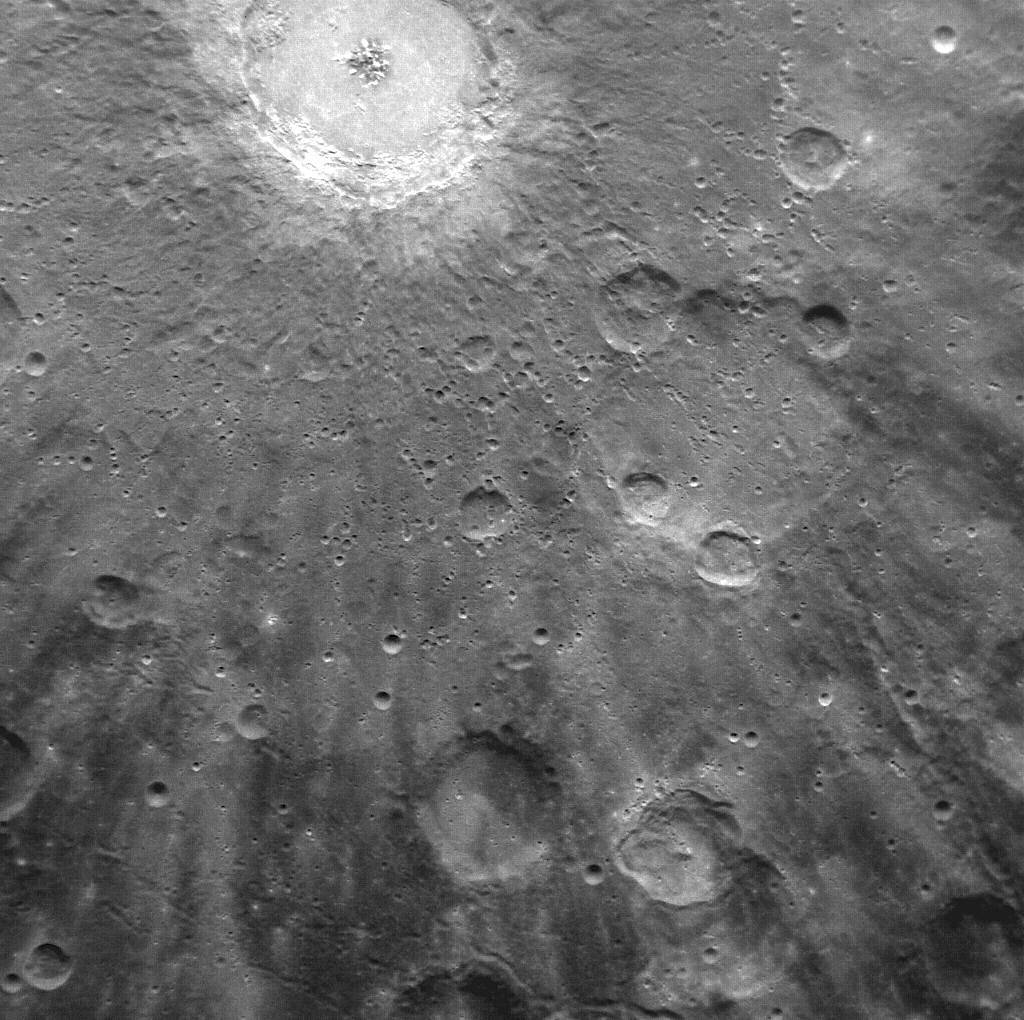
Bright rays, consisting of impact ejecta and secondary craters, spread across this NAC image and radiate from Debussy crater, located at the top. The image, acquired yesterday during the first orbit for which MDIS was imaging, shows just a small portion of Debussy’s large system of rays in greater detail than ever previously seen. Images acquired during MESSENGER’s second Mercury flyby showed that Debussy’s rays extend for hundreds of kilometers across Mercury’s surface. Debussy crater was named in March 2010, in honor of the French composer Claude Debussy (1862-1918).
Date acquired: March 29, 2011Image Credit: NASA/Johns Hopkins University Applied Physics Laboratory/Carnegie Institution of Washington


























